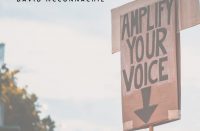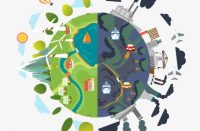Although it opens by framing sunlight on a forest floor, it’s hardly obvious that Sarah J. Christman’s newest (and lengthiest) documentary explores how matter is reshaped by energy. Contemplative scenery reveals as much as the dialogue, while unidentified speakers and a deliberate absence of talking heads keep the narrative elusive.
Although it opens by framing sunlight on a forest floor, it’s hardly obvious that Sarah J. Christman’s newest (and lengthiest) documentary explores how matter is reshaped by energy. Contemplative scenery reveals as much as the dialogue, while unidentified speakers and a deliberate absence of talking heads keep the narrative elusive. Yet the 34-year-old American filmmaker’s faith in nuance, respect for mystery and openness to interpretation is what makes As Above, So Below such a rare, offbeat treat.
The film melds three seemingly disparate storylines, each hinting at how alchemy has evolved with the rise of disposable culture. The primary focus is Christman’s mother as she decides to have some of her deceased husband’s remains turned into a diamond, and much of the early narration is a recorded phone call of that process being explained by the company’s representatives. The camera lingers on tension in her mother’s knuckles, or the careful removal of ashes from an urn – otherwise mundane details that slyly make the story more familiar and immersive.
The other two threads broaden the film’s scope. Discarded cell phones are collected, deconstructed and cooked into precious and base metals as the sales manager from a materials recycling multinational explains how the company recovers obsolete products rather than mining. Christman also profiles the Freshkills Park project in New York’s Staten Island borough, formerly the site of the world’s largest landfill. “Garbage is one very chronic and unsettling reminder of the inherently ephemeral nature of everything,” explains Robin Nagle, anthropologist in residence with the NYC department of sanitation.
The point is that industrial-scale manufacturing and technology have created boundless material goods to reinvent, whether or not we do so with care, efficiency or intention. (These three examples all do.) Our relationships with objects, which range from bizarrely intimate to blatantly fleeting, rarely take into account what happens when we no longer possess them. And while the amount of physical and psychic energy we pour into our possessions is staggering, what matters more is our blind, large-scale embrace of one of alchemy’s core ideas – that time can be bent to defy nature’s schedule in favour of ours.
As Above, So Below, directed by Sarah J. Christman, United States: Independent, 2012, 50 minutes
This review originally appeared in Lifecycles, Issue 39.1. Subscribe now to get more book reviews in your mailbox!
Reviewer Information
Eric is the founder and executive director of Night\Shift, downtown Kitchener’s nocturnal adventure festival, and he helped craft the rebranding of A\J as its editor-in-chief (2012-2014). He has a dusty Bachelor of History from uWaterloo and has worked as a journalist in Canada since 2000, holding editing positions with up! Magazine (WestJet Airlines’ in-flight publication), Adbusters, Reade











